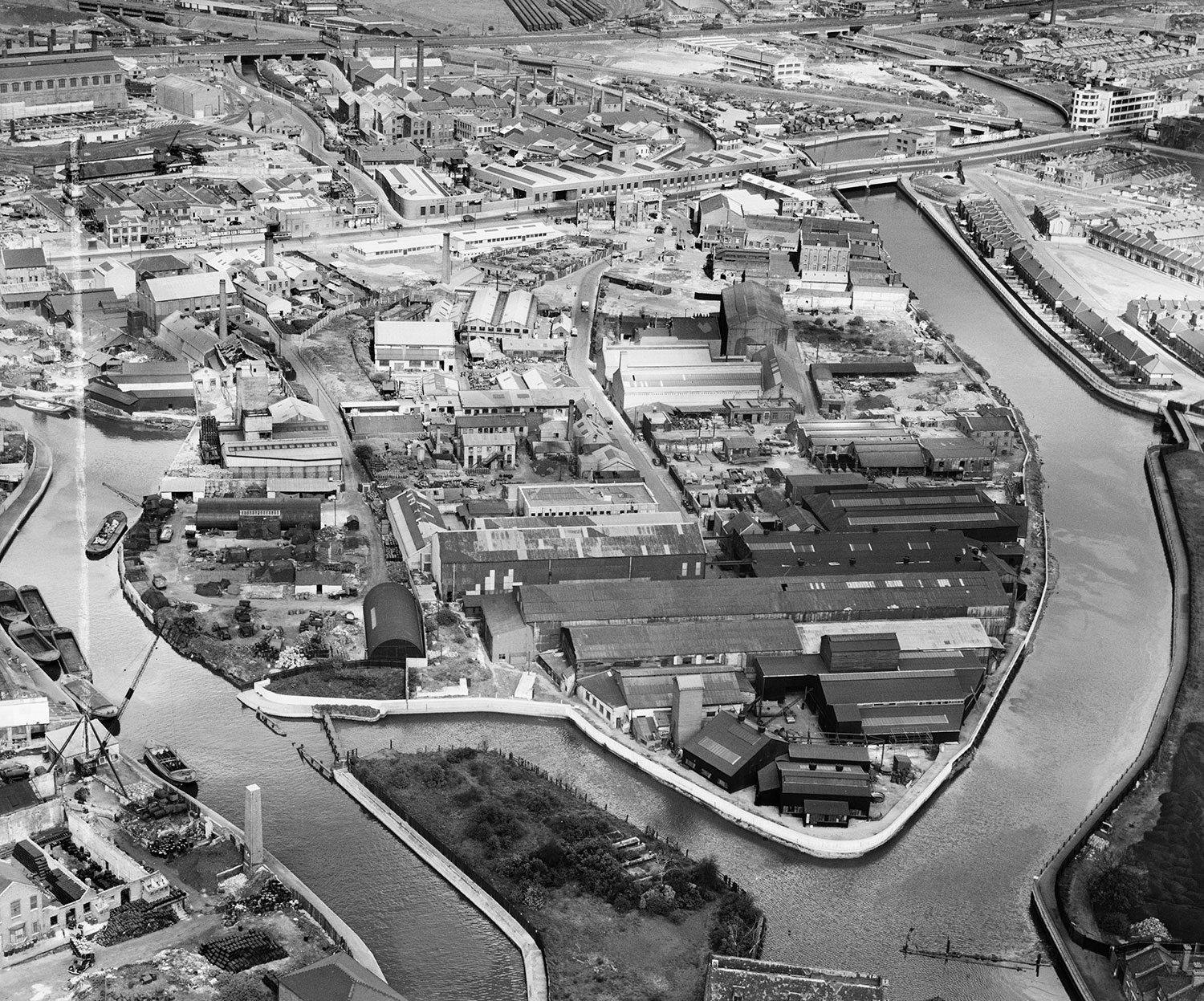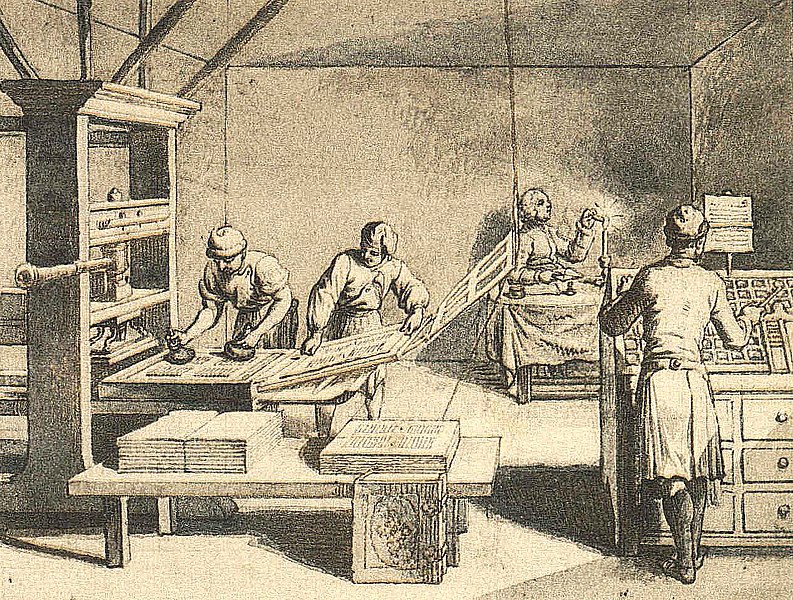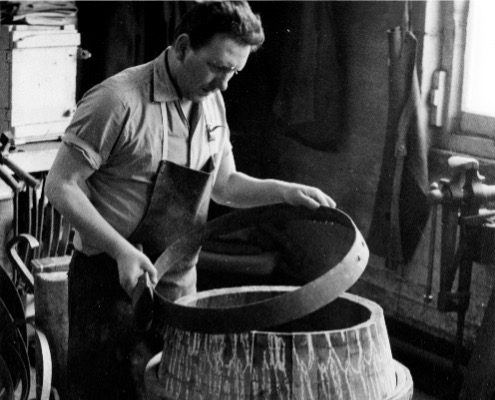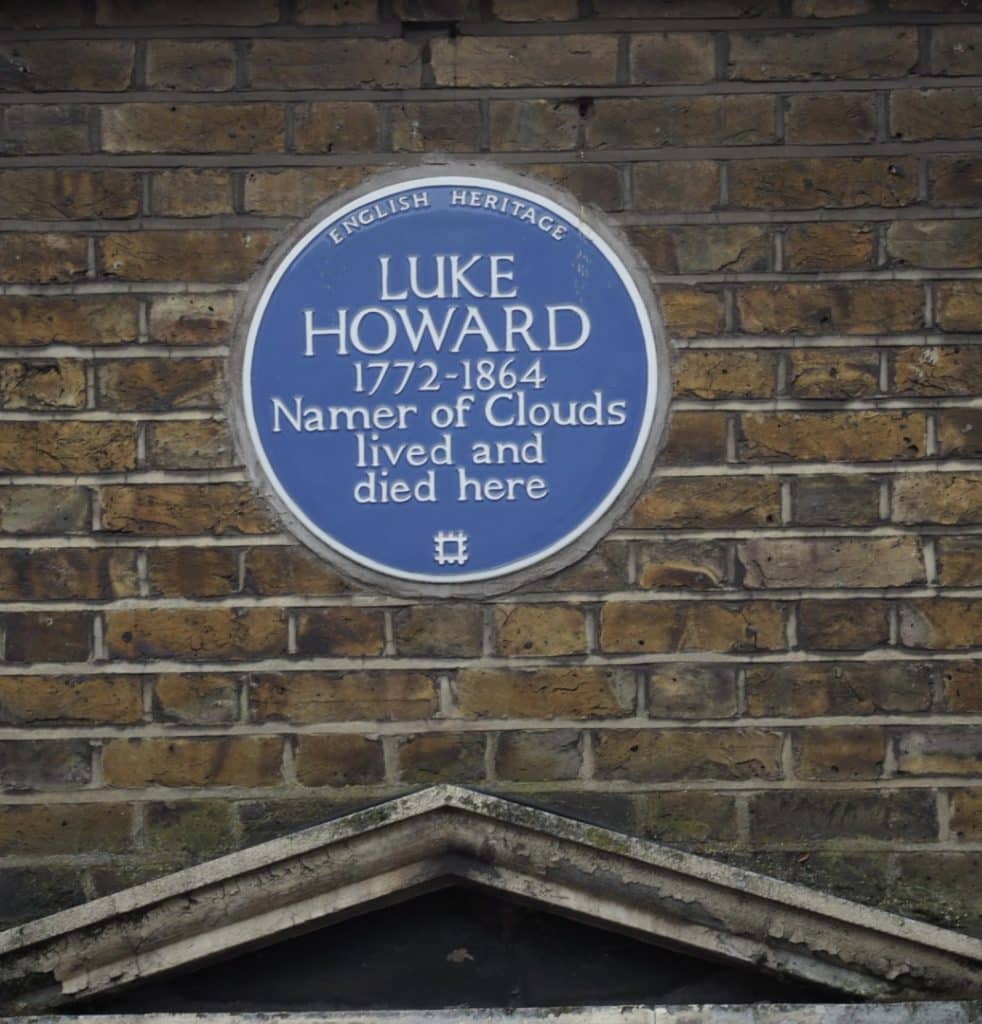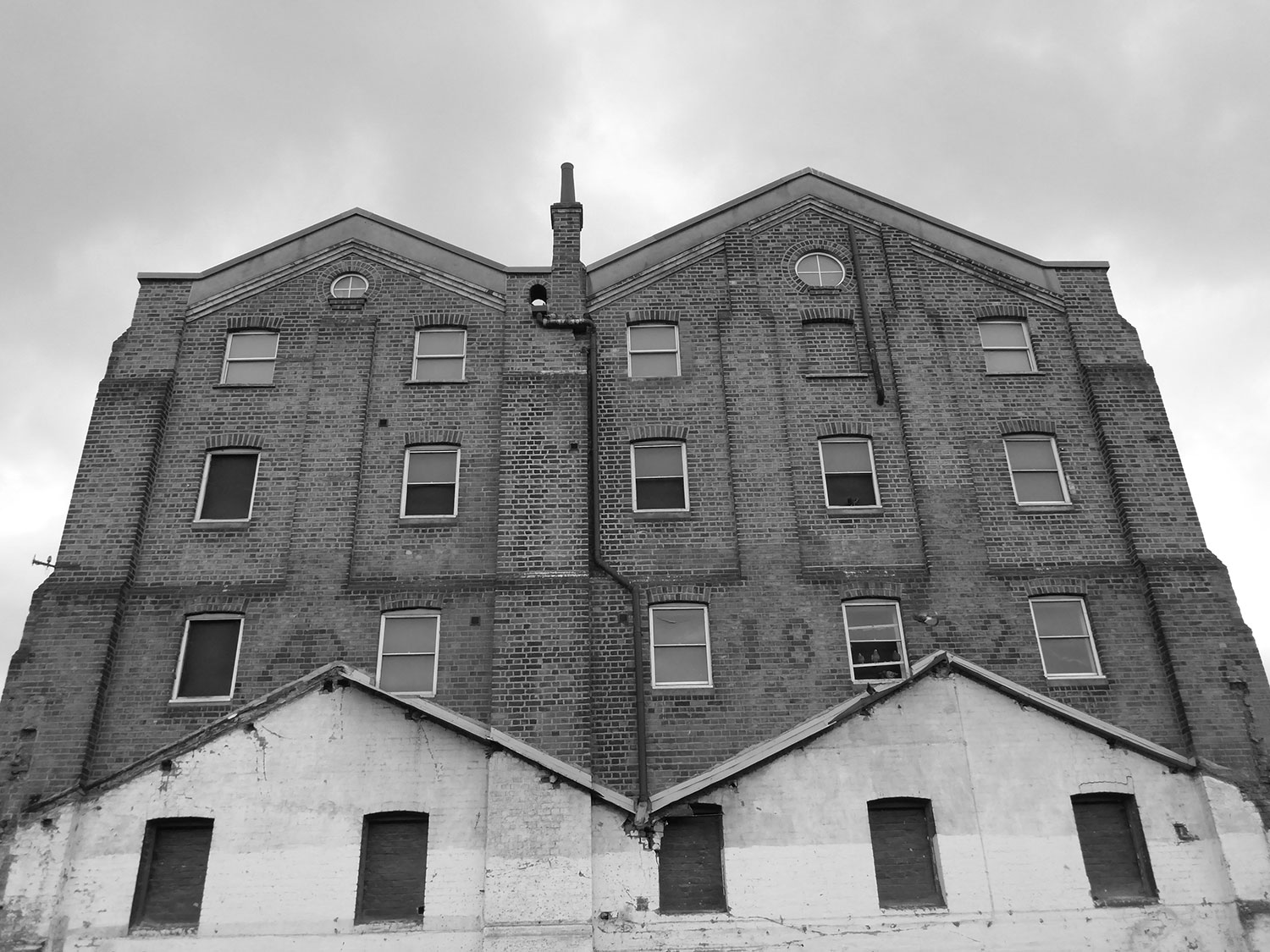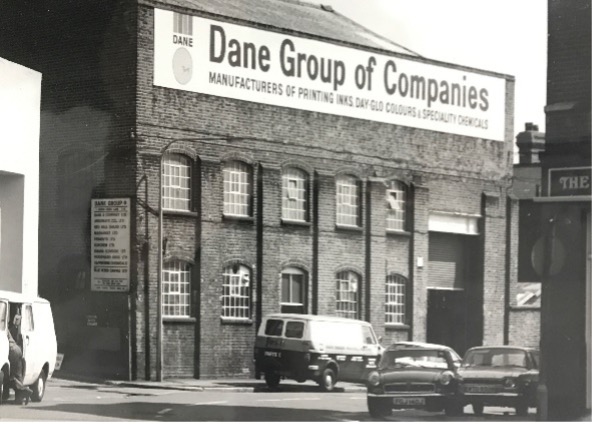Sugar House Island’s rich industrial heritage has been moulded by the watercourses surrounding its site for the past millennium.
The Domesday Book of 1086 notes eight tidal mills in the Stratford area, making the River Lea’s mills among the earliest tidal mills ever recorded in England.
The centre of a large circular economy, the mills generated work for mill operators, carpenters and coopers. Initially providing flour for the local bakers of Stratford, the mills turned to gin distilling in the 18th Century. Mash from the gin was used to feed large farms of pigs whose bones supplied the china factories at Bow, whilst their fat was used by local soap makers.
